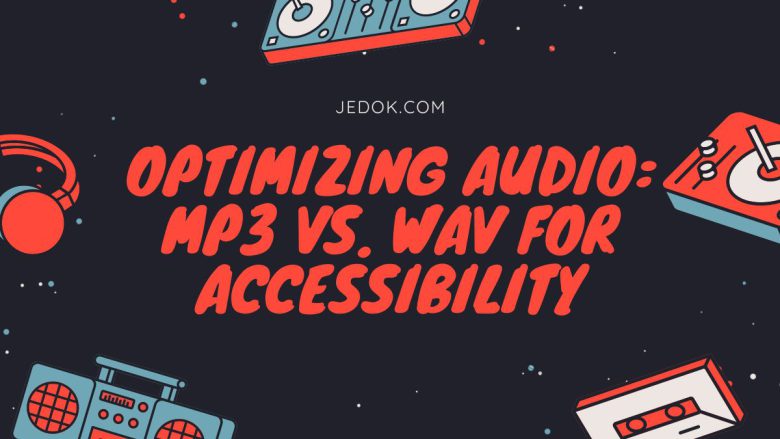
In the digital age, audio is vital. It makes content available and inclusive. It does so across platforms and biases. It’s key to choosing the right audio format. This applies to podcasts, music streaming, and audiobooks. It’s essential for delivering high-quality, accessible content to different cults. Many audio formats exist. MP3 and WAV are two popular choices. Each has distinct advantages and availability issues. This comprehensive companion explores the strengths and limits of MP3 and WAV formats. It gives insight into how good they are at making audio available.
1. MP3 (MPEG-1 Audio Layer 3):
MP3 is perhaps the most honored and used audio format. It’s known for its strong compression. It works on many devices and platforms. It uses perceptual audio coding to reduce file size while maintaining audio quality. This makes it great for streaming, downloading, and sharing audio online. MP3 files are much smaller than uncompressed ones. This saves bandwidth and space without hurting sound quality.
MP3 has a key advantage. It works with many media players, mobile devices, and streaming platforms. This gives it flawless playback and makes it available for users worldwide. This ubiquity makes MP3 a versatile choice. It is used to deliver audio across many settings, from music to education. MP3 also supports metadata. This includes information like artist, reader, and track. It enhances finding audio for drug users with visual or thinking problems.
Still, it’s essential to admit that MP3’s algorithm is effective but lossy. It discards some audio data when encoding. This contraction is generally too small for people to notice. But it may cause a slight drop in audio quality, especially at lower bitrates. For critical operations, audio dedication is key. This is true for professional music products and archives. For these, formats like WAV may be better.
WAV (Waveform Audio File Format):
WAV is an uncompressed audio format. It is known for its high dedication and lossless quality. This makes it a great choice for operations where audio integrity is crucial. Unlike MP3, which uses lossy compression, WAV files retain all the original audio data. This allows faithful duplication of sound without any loss. This makes WAV ideal for pro audio products. It’s also great for learning and editing. These tasks need perfection and delicacy.
One big advantage of WAV is its compatibility with many types of audio software. This includes audio editing software, digital audio workstations (DAWs), and professional recording gear. This comity ensures flawless integration into professional workflows. It lets generators capture, edit, and control audio with maximum inflexibility. Also, WAV supports uncompressed PCM audio. This audio is for operations that use high-resolution audio. This includes audiophile listening or learning about high-definition formats.
Still, WAV’s uncompressed nature comes with trade-offs. These are for file size and storage conditions. WAV files are much bigger than MP3s. They use more bandwidth and space. This is important for streaming services. They need to optimize bandwidth and storage to deliver content to users well. Also, WAV files may not be as well supported on all platforms. This may limit availability for some users.
Conclusion
To optimize audio for availability, the right format depends on many factors. These include the intended use, follower preferences, and special needs. MP3 offers effective shrinking and wide compatibility for streaming and distribution. But WAV provides unmatched audio devotion and perfection for pros.
MP3 is for mainstream audio delivery, like music streaming, podcasts, or online lectures. It remains a practical choice. It balances audio quality and file size. Still, for creators and pros who want precise audio control, WAV is the favorite. It keeps sounding exact and pure, with no quality loss.
Content generators can understand the strengths and limits of MP3 and WAV formats. This will let them form informed opinions. They can use this to improve audio. It’s for availability, inclusivity, and quality. It works across platforms and cultures. The right audio format is essential. It creates engaging, accessible audio for listeners worldwide. It’s key for immersive music and educational content.


